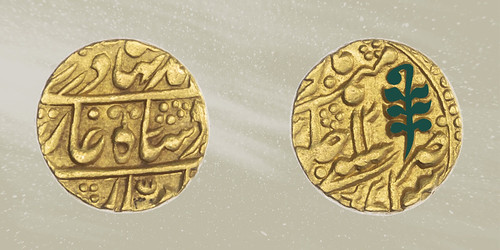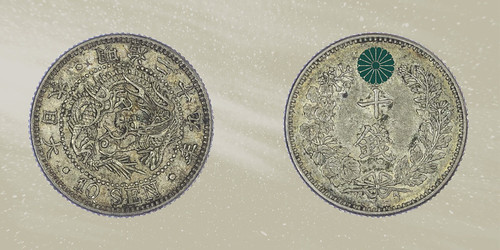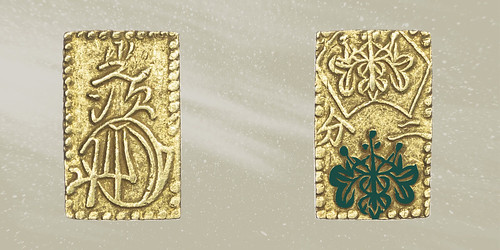
PREV ARTICLE
NEXT ARTICLE
FULL ISSUE
PREV FULL ISSUE
V25 2022 INDEX E-SYLUM ARCHIVE THE MEANING OF PLANTS ON WORLD COINSA recent blog article by Baldwin's World Coin Expert Ema Sikic covers an interesting topic: the meaning of plants on world coins. Here's an excerpt - see the complete article online. -Editor Many spectacular world coins feature an array of plants, but why does this iconography hold such significance? Today we look at five coins and the meaning behind the plants that are depicted on them. COINS OF JAIPUR – JHAR LEAF Jhar leaf is one of the most recognizable symbols on Indian coins and it appears on gold, silver and copper coinage of various Princely States. Most notably, it is a symbol of the Princely State of Jaipur and Jaipur mint. It appears on coins of Jaipur with a bud on top is the symbol of the Jaipur mint, which was adopted by the state of Kishangarh as well. COINS OF JAPAN – CHRYSANTHEMUM The Imperial Seal of Japan or National Seal of Japan is also called the Chrysanthemum Seal (kikumon) or Imperial chrysanthemum emblem. It is one of the national seals and a crest (mon) used by the Emperor of Japan and members of the Imperial Family and it was adopted 839 years ago. During the Meiji Era, only the Emperor of Japan had the right to use the sixteen-petalled chrysanthemum seen on coins. Other members of the Imperial family used a slightly modified version of the seal. Shinto shrines also displayed the Imperial Seal or incorporated elements of the seal into their own tag. COINS OF JAPAN – PAULOWNIA The Government Seal of Japan and one of the country's national seals, is the emblem (mon) of Paulownia, also known as Kiri crest (kirimon) or the Empress Tree. It is used by the Prime Minister, the Cabinet and the Government of Japan on official documents. It is stylized as Paulownia with flowers arranged in 5-7-5 formation, although through history many other varieties appear on Samurai Kobans and Bu denominations. It resembles a stylized paulownia with 5-7-5 flowers. Before the Chrysanthemum Seal was used extensively, the Paulownia Seal originally was the private symbol of the Japanese Imperial Family, from as early as the 16th century.
To read the complete article, see:
THE BOOK BAZARREWayne Homren, Editor The Numismatic Bibliomania Society is a non-profit organization promoting numismatic literature. See our web site at coinbooks.org. To submit items for publication in The E-Sylum, write to the Editor at this address: whomren@gmail.com To subscribe go to: https://my.binhost.com/lists/listinfo/esylum All Rights Reserved. NBS Home Page Contact the NBS webmaster 
|


